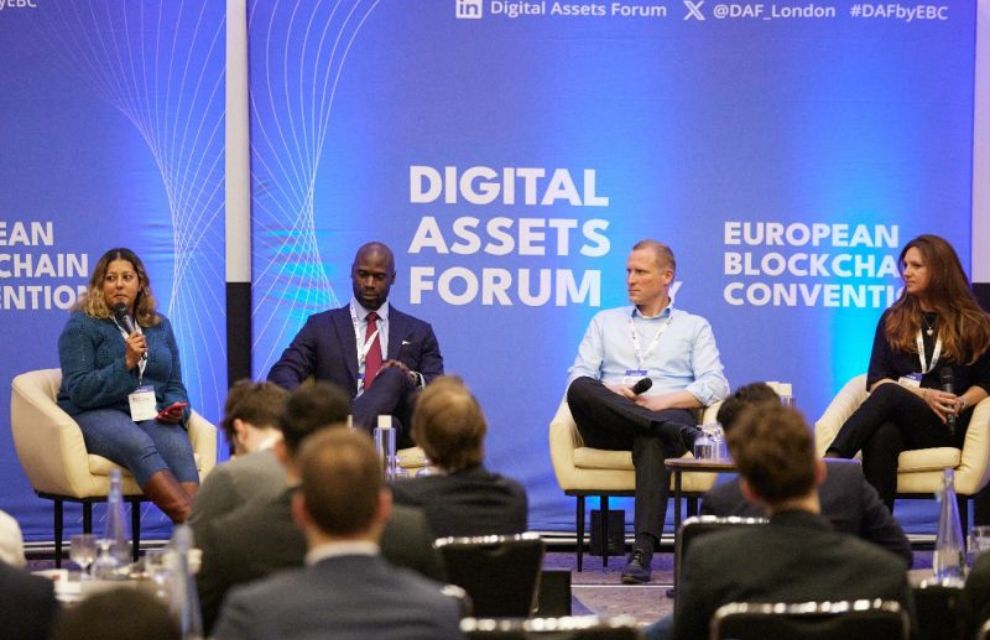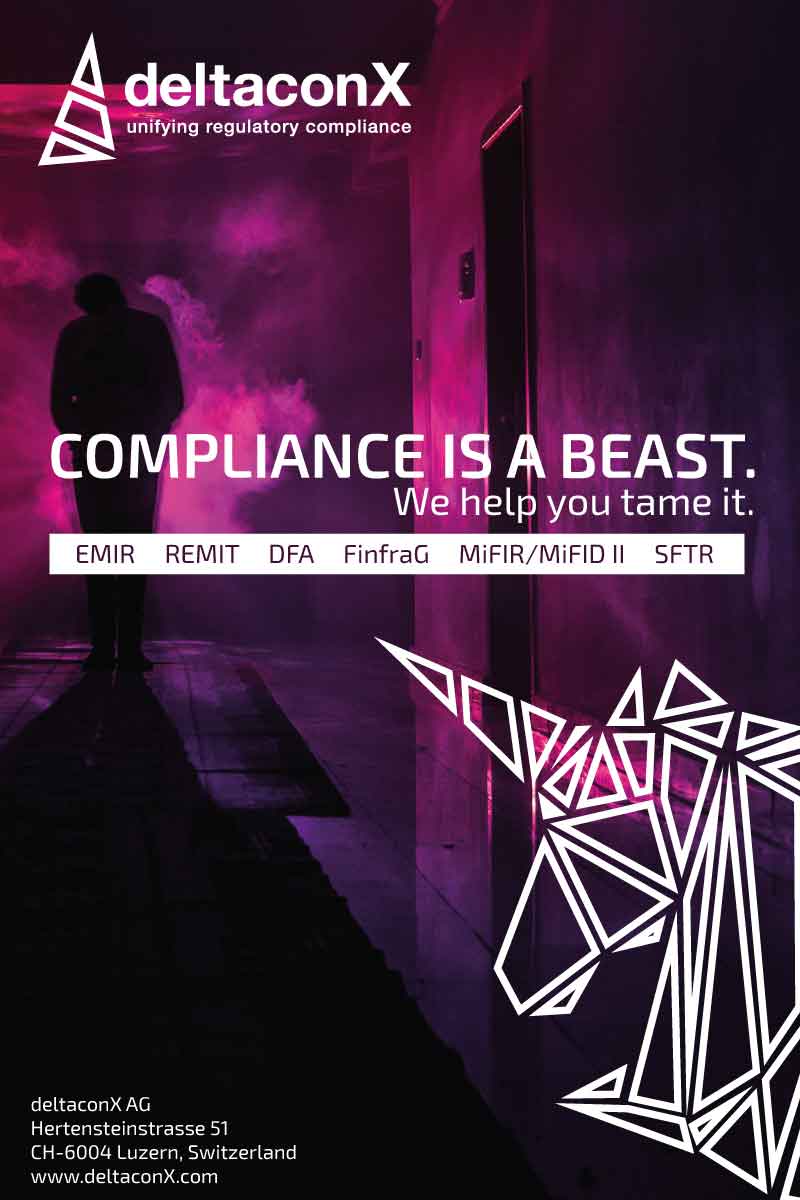DAF: panellists divided over the future of digital money
16 April 2024 UK
 Image: Digital Assets Forum
Image: Digital Assets Forum
There are multiple problems to overcome with digital money, say panellists at the Digital Assets Forum in London.
The participants discussed the role of stablecoins and central bank digital currencies (CBDC) across the financial ecosystem, as well as the challenges faced by the industry in adopting them.
Jannah Patchay, executive director and policy lead at the Digital Pound Foundation, kicked off the discussion with an overview of the changing market. She described the ongoing decline in public money and increase in forms of private money that has happened over the last 30 years.
Natacha Dezert, blockchain and digital assets programme manager at BNP Paribas, confirmed this. Speaking on behalf of wholesale transactions, she highlighted the growing interest of institutional clients in tokenised forms of transactions.
“We are very excited that the European Central Bank launched a wholesale CBDC programme to explore what CBDC could bring to the market and what the best models would look like.
“It's the first time the framework is provided at European level,” she continued. “It is exactly what we needed to unlock many use cases and to really explore the full potential for innovation that blockchain can bring.”
Sören Hettler, head of investment strategy and private clients at DZ Bank, agreed with Dezert about the need for a wholesale CBDC. He discussed the benefits that this would offer for commercial banks and the financial system in general.
Regarding a retail CBDC, however, he argued that it is mainly the central banks that need a digital euro for strategic reasons. For citizens, financial institutions and markets, the benefits are rather limited.
When questioned by Jovi Overo, director of Unlimit BaaS at Unlimit, about whether this meant retail CBDC’s were “doomed to fail”, he disagreed.
“The ECB is determined to make the digital euro a success. A form of money that is free of charge and can be used as legal tender everywhere in the euro area in daily life is attractive. This is especially true if it is convenient to use,” he contended.
The question of stablecoin versus CBDC’s continued to be a key point of debate as the discussion unfolded.
Overo firmly advocated for the use of stablecoins, highlighting how it can offer businesses an opportunity to overcome inefficiencies in the settlement cycle. “Many people don’t trust that CBDC’s will be as effective or efficient,” he argued.
Conversely, Dezert contended that for her use, stablecoins would not be the most appropriate solution. “Stablecoins bear a risk which you don’t have with central bank money,” she said.
Patchay countered the debate with a consideration of the wider picture. “Although new forms of digital money have great potential, there are challenges in the path to mass adoption which is why these benefits have not yet been fully realised."
Due to this, the panellists agreed that there would be no profound changes in the next 18 to 24 months.
As Dezert explained, there are a number of challenges to overcome, including the complexity of the systems and the time needed to implement them. “We need international collaboration to agree on standards and rules for various CBDC systems to be compatible and interoperable,” she added.
Concluding the panel, Hettler mused on what the industry can aim for. “Ideally, in a few years from now, we’d have a system with different forms of money in peaceful co-existence, a digital euro issued by the central bank as an equivalent to today‘s cash, and a commercial bank money token as an improved DLT based form of private money.
“Such a system would lay the foundation to really anchor blockchain in the euro area.”
The participants discussed the role of stablecoins and central bank digital currencies (CBDC) across the financial ecosystem, as well as the challenges faced by the industry in adopting them.
Jannah Patchay, executive director and policy lead at the Digital Pound Foundation, kicked off the discussion with an overview of the changing market. She described the ongoing decline in public money and increase in forms of private money that has happened over the last 30 years.
Natacha Dezert, blockchain and digital assets programme manager at BNP Paribas, confirmed this. Speaking on behalf of wholesale transactions, she highlighted the growing interest of institutional clients in tokenised forms of transactions.
“We are very excited that the European Central Bank launched a wholesale CBDC programme to explore what CBDC could bring to the market and what the best models would look like.
“It's the first time the framework is provided at European level,” she continued. “It is exactly what we needed to unlock many use cases and to really explore the full potential for innovation that blockchain can bring.”
Sören Hettler, head of investment strategy and private clients at DZ Bank, agreed with Dezert about the need for a wholesale CBDC. He discussed the benefits that this would offer for commercial banks and the financial system in general.
Regarding a retail CBDC, however, he argued that it is mainly the central banks that need a digital euro for strategic reasons. For citizens, financial institutions and markets, the benefits are rather limited.
When questioned by Jovi Overo, director of Unlimit BaaS at Unlimit, about whether this meant retail CBDC’s were “doomed to fail”, he disagreed.
“The ECB is determined to make the digital euro a success. A form of money that is free of charge and can be used as legal tender everywhere in the euro area in daily life is attractive. This is especially true if it is convenient to use,” he contended.
The question of stablecoin versus CBDC’s continued to be a key point of debate as the discussion unfolded.
Overo firmly advocated for the use of stablecoins, highlighting how it can offer businesses an opportunity to overcome inefficiencies in the settlement cycle. “Many people don’t trust that CBDC’s will be as effective or efficient,” he argued.
Conversely, Dezert contended that for her use, stablecoins would not be the most appropriate solution. “Stablecoins bear a risk which you don’t have with central bank money,” she said.
Patchay countered the debate with a consideration of the wider picture. “Although new forms of digital money have great potential, there are challenges in the path to mass adoption which is why these benefits have not yet been fully realised."
Due to this, the panellists agreed that there would be no profound changes in the next 18 to 24 months.
As Dezert explained, there are a number of challenges to overcome, including the complexity of the systems and the time needed to implement them. “We need international collaboration to agree on standards and rules for various CBDC systems to be compatible and interoperable,” she added.
Concluding the panel, Hettler mused on what the industry can aim for. “Ideally, in a few years from now, we’d have a system with different forms of money in peaceful co-existence, a digital euro issued by the central bank as an equivalent to today‘s cash, and a commercial bank money token as an improved DLT based form of private money.
“Such a system would lay the foundation to really anchor blockchain in the euro area.”
← Previous digital assets article
Marathon selects Zodia Custody as international digital asset custodian
Marathon selects Zodia Custody as international digital asset custodian
NO FEE, NO RISK
100% ON RETURNS If you invest in only one asset servicing news source this year, make sure it is your free subscription to Asset Servicing Times
100% ON RETURNS If you invest in only one asset servicing news source this year, make sure it is your free subscription to Asset Servicing Times



